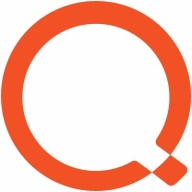


Hexnode UEM and KACE Systems Management Appliance compete in IT infrastructure management. Hexnode UEM stands out with its competitive pricing and customer support, whereas KACE SMA is recognized for its comprehensive features.
Features: Hexnode UEM delivers mobile device management, application management, and strong security policies. KACE SMA offers extensive asset management, service desk integration, and software deployment tools. The key difference is KACE's strong IT asset and service management focus, while Hexnode prioritizes device management.
Ease of Deployment and Customer Service: Hexnode UEM ensures an easy deployment process supported by effective customer service, addressing customer inquiries swiftly. KACE SMA, despite a more intricate initial setup due to its expanded features, also provides satisfactory customer service. The main contrast is Hexnode’s simpler setup compared to KACE's feature-rich model requiring more deployment effort.
Pricing and ROI: Hexnode UEM is valued for its cost-effectiveness and high ROI potential due to a competitive pricing structure. KACE SMA, while more expensive initially, offers substantial ROI through its extensive IT management functionalities. The primary distinction is Hexnode’s affordability versus KACE's justification of higher costs through its advanced features.
| Product | Market Share (%) |
|---|---|
| Microsoft Intune | 33.7% |
| Quest KACE Systems Management Appliance (SMA) | 1.8% |
| Hexnode UEM | 1.0% |
| Other | 63.5% |


| Company Size | Count |
|---|---|
| Small Business | 114 |
| Midsize Enterprise | 45 |
| Large Enterprise | 150 |
| Company Size | Count |
|---|---|
| Small Business | 8 |
| Midsize Enterprise | 20 |
| Large Enterprise | 15 |
Microsoft Intune provides centralized management of mobile devices and applications, ensuring security, compliance, and productivity through integration with Microsoft services like Microsoft 365 and Azure Active Directory.
Organizations use Intune for managing mobile devices and applications, enhancing security and compliance across platforms. With features like single sign-on, conditional access, and zero-touch deployment via Autopilot, it facilitates efficient operations. Intune's scalability, easy enrollment, and capabilities such as remote wipe support diverse device management, offering robust data protection and efficient operation. Despite its features, improvement areas include reporting, compatibility with non-Microsoft devices, and better support for macOS and Linux devices.
What are the key features of Microsoft Intune?
What benefits should users look for in reviews?
In industries such as finance, healthcare, and education, Microsoft Intune is implemented to ensure secure and compliant device management. Companies leverage its capabilities to deploy security policies and manage both corporate-owned and BYOD environments, facilitating a unified approach to data protection and compliance.
Hexnode is a 360-degree Unified Endpoint Management solution that puts you right at the center of mobility across your enterprise. You can monitor, manage and secure BYOD (Bring Your Own Device) and corporate-owned devices in your organization from a single pane of glass. Hexnode is equipped to handle all endpoints across multiple platforms. Be it healthcare, education, financial, retail, government or any industry for that matter, you can securely mobilize your business. With a handful of solutions such as app management, security management, expense management, and containerization, Hexnode adapts to the most complex of business environments.
KACE Systems Management Appliance offers integration capabilities, efficient image deployment, and comprehensive asset management. It supports centralized management across diverse devices and locations, simplifying IT processes and enhancing security.
KACE Systems Management Appliance provides single-pane visibility for endpoint management, mass software deployment, automated patch management, robust scripting, and detailed inventory tracking. It streamlines IT management and improves cyber-security compliance through remote software updates and centralized IT request handling. Despite struggles with scalability and the need for interface improvements, it enables efficient device imaging, script automation, and network management through detailed reporting. Organizations find it effective for software deployment, asset management, and endpoint monitoring, serving thousands of IoT devices and desktops.
What are the key features of KACE Systems Management Appliance?In healthcare, KACE Systems Management Appliance is used for maintaining device compliance and security standards. Educational institutions benefit from its capabilities to manage large numbers of endpoints across campuses. In finance, it aids in strict compliance requirements through automated patch management and detailed reporting. Retail sectors leverage its asset management features to streamline operations across numerous locations.
We monitor all Unified Endpoint Management (UEM) reviews to prevent fraudulent reviews and keep review quality high. We do not post reviews by company employees or direct competitors. We validate each review for authenticity via cross-reference with LinkedIn, and personal follow-up with the reviewer when necessary.